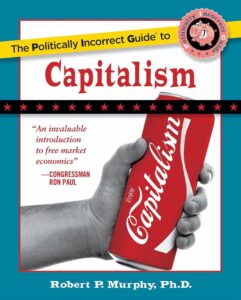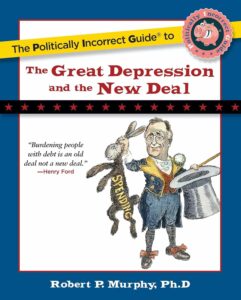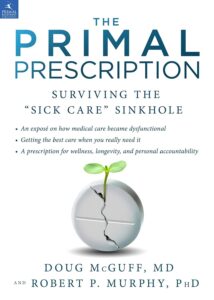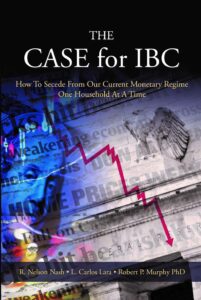When You’re Right With the Lord, You Make Good Decisions
I am at my parents’ house so blogging will be sparse for a while. In the meantime check out this passage (2 Chronicles 26: 1-15) which illustrates the way I think God works in history:
1 Then all the people of Judah took Uzziah, [a] who was sixteen years old, and made him king in place of his father Amaziah. 2 He was the one who rebuilt Elath and restored it to Judah after Amaziah rested with his fathers.
3 Uzziah was sixteen years old when he became king, and he reigned in Jerusalem fifty-two years. His mother’s name was Jecoliah; she was from Jerusalem. 4 He did what was right in the eyes of the LORD, just as his father Amaziah had done. 5 He sought God during the days of Zechariah, who instructed him in the fear [b] of God. As long as he sought the LORD, God gave him success.6 He went to war against the Philistines and broke down the walls of Gath, Jabneh and Ashdod. He then rebuilt towns near Ashdod and elsewhere among the Philistines. 7 God helped him against the Philistines and against the Arabs who lived in Gur Baal and against the Meunites. 8 The Ammonites brought tribute to Uzziah, and his fame spread as far as the border of Egypt, because he had become very powerful.
9 Uzziah built towers in Jerusalem at the Corner Gate, at the Valley Gate and at the angle of the wall, and he fortified them. 10 He also built towers in the desert and dug many cisterns, because he had much livestock in the foothills and in the plain. He had people working his fields and vineyards in the hills and in the fertile lands, for he loved the soil.
11 Uzziah had a well-trained army, ready to go out by divisions according to their numbers as mustered by Jeiel the secretary and Maaseiah the officer under the direction of Hananiah, one of the royal officials. 12 The total number of family leaders over the fighting men was 2,600. 13 Under their command was an army of 307,500 men trained for war, a powerful force to support the king against his enemies. 14 Uzziah provided shields, spears, helmets, coats of armor, bows and slingstones for the entire army. 15 In Jerusalem he made machines designed by skillful men for use on the towers and on the corner defenses to shoot arrows and hurl large stones. His fame spread far and wide, for he was greatly helped until he became powerful.
So of course the writer attributes Uzziah’s (initial) success to his obedience to the Lord’s ways, but an atheist could say, “No that had nothing to do with it. Look the guy was a smart military commander and even spent money on R&D for advanced weaponry.”
Wenzel Flips?
A few readers want to know what I think of this provocative post by Robert Wenzel, in which he says Bernanke conned a bunch of us (bold mine):
This is big. It is going to knock for a big loop all those concerned about the inflationary consequences of the soaring monetary base. The Federal Reserve Bank of New York today released a report, “Why Are Banks Holding So Many Excess Reserves?”.
Fed economists Todd Keister and James McAndrews state that while the high level of reserves in the U.S. banking system during the financial crisis reflects the large scale of the Federal Reserve’s policy initiatives, it conveys no information about the effect of these initiatives on bank lending or on the level of economic activity. This is another way of saying what I have been saying right along, watch the money supply, not the monetary base.
Keister and McAndrews explain that the buildup of reserves in the banking system is a by-product of the liquidity facilities and other credit programs introduced by the Federal Reserve in response to the crisis. They also discuss the importance of paying interest on reserves when the level of excess reserves is unusually high. But the key point they make remains that the majority of the newly created reserves end up being held as excess reserves and, therefore, the data on excess reserves provide no useful insight into the lending decisions and other activities of banks. Got that? The trillion dollars sitting as excess reserves has had no impact on the economy, and as the Fed stops it’s emergency facilities, it is going to be drained. The trillion never went into the economy and never will.
If Keister and McAndrews are correct, and I believe they are, then the Fed will have little problem in ending its emergency lending facility activities. The banks by maintaining those funds as excess reserves (for whatever reason, even if it is simply to earn interest) have in reality kept those funds out of the economic system. As the Fed ends its liquidity emergency facilities they will have to pay back the borrowed funds.
The alarmists, who have thus pointed to the surge in the monetary base as a sign of soaring Fed monetary “easing” and who have been shouting about the inflationary consequences, are going to go into cardiac arrest once they see the monetary base crash when the Fed winds down its emergency facilities and the banks use the excess reserves to pay back the facility funds. The super-decline in the monetary base, as was the super-increase in the monetary base, will of course mean nothing relative to the actual money supply, which is where one should have been keeping one’s eyes all along.
In a way Bernanke played a huge shell game on the global financial world. All the so called easing never happened. Let me repeat, what was touted by almost every economist in the world as the extremely loose monetary policy, didn’t happen. The money never entered the system. It was a bluff. Bernanke has set us up for Crash II and few see it coming. I wouldn’t want to play poker against him.
So here are my quick reactions:
(1) I think those Fed economists are wrong. I think we are going to get big-time price inflation, and when we do, people will look back at those who were blowing off a tripling of the monetary base in a little more than a year and think, “Wow, that’s as inconceivable in hindsight as the people who said we weren’t in a housing bubble.” And incidentally, two of the people who said we weren’t in a housing bubble were Fed economists at the height of the boom. How do I know? Because Robert Wenzel told his readers about it.
(2) It’s true that Wenzel was the first guy I saw who was warning that Bernanke had put the brakes on M1 and M2 growth back in March or so. But it was also Wenzel who taught me that the Fed won’t be able to simply reverse its injections of reserves, because the assets it purchased on the way up won’t fetch the same price on the way down. I.e. the Fed can’t simply reverse its actions and “suck the liquidity out of the system,” because it may have seriously overpaid for a bunch of the MBS, Freddie and Fannie debt it added to its balance sheet.
So I don’t view the Wenzel quotation above as a shot against me; if it is, it’s only because of views that I literally learned directly from Wenzel himself.
(3) One final thing: I am going to be really peeved if everything I have been saying turns out true–namely that those excess reserves start finding their way out into the hands of the public (through various mechanisms we have been discussing on this blog), and then when price inflation breaks 10% Wenzel says, “See? M2 is up 28% year-to-date. A lot of economists were flipping out last year because of the huge monetary base, but only EPJ readers knew that the monetary base wasn’t the story, M2 was. You need to read my blog to know what’s up.”
Jim Manzi Talks About the IPCC Consensus and Tom Friedman
I loved this Jim Manzi guest post at MasterResource, particularly because I recruited him for the task. The irony is that the latest IPCC report does not support aggressive emission cuts. You’ll notice that the people who do propose such actions will say things like, “Things have gotten worse since the IPCC AR4 report came out, as this paper in Science suggests…” Here’s Manzi:
It is amusing to watch advocates of rapid, aggressive carbon dioxide emissions reduction, when confronted with the plain facts of the consensus scientific projections for climate change and its associated damages, move from “science says we must do this or die” to “well, actually, the science is pretty uncertain, so it’s possible that we might die,” and then proceed to some restatement of Pascal’s Wager.
Tom Friedman’s recent New York Times column is a perfect illustration of this logic. I’ll quote him at length, before demonstrating that his emission-cuts-as-insurance analogy breaks down once you plug in actual numbers…
Talk to Me Like I’m a 4-Year-Old: Why Aren’t Banks Putting Those Reserves to Work?
Carlos Lara and I just spent 5 hours in the car driving to an undisclosed location in Indiana to meet with some life insurance people for our forthcoming book. Not surprisingly, we talked about the $1.1 trillion in excess reserves, and what it would take for them to start trickling (gushing?) out.
I explained that I have always found this typical explanation incomplete: “The banks can’t lend right now because they fear another wave of defaults and so they have to be ready for their balance sheets to take another huge hit.”
I don’t think that can be the whole story. I don’t doubt that this is basically correct, but I’m an economist so I need it to be right in theory before I can accept it even if I’m sure it’s right in practice.
Specifically, here’s my problem: Suppose the banks didn’t fear any future defaults. Then they’d start making new loans and earning a lot more than Bernanke’s piddling interest payments. So their balance sheets would get better more quickly than if they kept their reserves parked at the Fed.
OK, so if the way to increase your shareholders’ equity (i.e. gap between assets and liabilities) in normal times is to lend out excess reserves, that fact isn’t changed per se by the possibility that a bunch of your assets are bad. In fact it should make you even more eager to seek the most profitable use of your reserves.
Like I said, I know there is something wrong with my argument; I believe the people who are saying the banks aren’t making new loans because they’re worried that a bunch of their current loans will stop performing. But I just want to hear the explanation spelled out a little more.
For example, is it really like this: The banks are like households, and they have standard operating expenses. Right now they have cash coming in the door every month from people paying down their credit cards, mortgages, car loans, etc. But if those people get laid off and stop making payments, now the banks can’t pay their leases, utility bills, employees, etc. So if they have a stockpile of reserves, they can start drawing them down. But, if they had foolishly invested all of their excess reserves even in super great projects yielding 80% over 5 years, they would have to shut down if those projects were illiquid and they couldn’t meet their basic expenses.
Is the above paragraph in the right spirit?
Last point: If indeed it’s true that the banks are keeping their reserves on hand, in case they need to draw them down to cover their operating expenses, then…
Doesn’t that mean prolonged unemployment will lead to those reserves getting back into the hands of the public??
CNBC Doesn’t Anger Me on Inflation Report
They didn’t say, “Inflation is back! Ru-u-u-un!” but they at least didn’t say anything aggravating like, “Inflation pressures remain modest.” Here’s CNBC terse discussion:
U.S. Consumer Prices Rose 0.4% in Nov., Deficit Widens
U.S. consumer prices rose in line with expectations in November on a surge in energy costs, but prices were flat, excluding food and energy, a government report showed Wednesday.
The Labor Department said its Consumer Price Index leaped 0.4 percent on a seasonally adjusted basis after an unrevised 0.3 percent gain in October. A 4.1 percent burst in the energy index led the rise, as gasoline, electricity, fuel oil, and natural gas prices rose.
Prices rose 1.8 percent over the last 12 months, as expected, the first year-over-year gain since February. Core prices rose 1.7 percent over the 12-month period.
Separately, the U.S. current account deficit widened as expected in the third quarter to $108 billion, largely driven by a big trade shortfall, a Commerce Department report showed on Wednesday…
For the record, non-seasonally adjusted CPI is up 1.8% over the last 12 months (from Nov. 2008 – Nov. 2009), and from Dec. 08 – Nov. 09 it’s up 2.9%, which works out to an annualized rate of about 3.2% if I’ve done my math correctly. (I just woke up.)
So don’t let anybody tell you we’re stuck in a liquidity trap with its related “paradox of thrift” and now the “paradox of toil” (in which output drops when the government cuts labor taxes).
What Kind of Nutjobs Raised Andy Williams?
Did any of you grow up with a family tradition of telling scary ghost stories around Christmas?
Matt Yglesias, Inflation Denier
Despite the theoretical connection between printing money and rising prices, and the empirical evidence staring him in the face, Matt Yglesias continues to raise doubts in the minds of the public over the threat of purchasing-power change. Here’s Yglesias telling us up is down:
Inflation continues to be very low. But here’s how Daniel Costello reported it from Planet Money:
The core PPI – which excludes food and energy prices – rose 0.5% in November, more than expected. Leading the advance: truck and cigarette prices. Core prices are up 1.2% over the past year.
The news is unlikely to change the Fed’s decision on whether or not to keep interest rates at a record low Tuesday. But it does add to concerns the central bank’s loose monetary policy could lead to greater inflation and new asset bubbles down the road.
In 2008, the CPI increased 0.1 percent, way below the Fed’s 2 percent implicit target. In 2009 thus far, the CPI is set to increase by a number that’s higher than that, but still below the implicit target of 2 percent. So why, logically, would an increase from “way below target” to “somewhat below target” spark a concern about inflation? It would take a year or two of inclation above the target rate for the price level to return to its long-run trajectory. I doubt that if we had a year of 3.9 percent inflation followed by a year of 2.6 percent inflation that you’d hear people saying the Fed was worried about deflation. They’d say the Fed was glad things were getting closer to the target.
OK so Yglesias is making two separate claims here:
(1) Inflation continues to be very low.
(2) Using core inflation as an index, we are below the long-run target of 2% per year.
Both claims are wrong, unless we very carefully choose our time frame. In terms of reaction to the PPI report, inflation is very HIGH–after all, the actual PPI went up 1.8 percent in one month (seasonally adjusted), which works out to annual inflation of about 24%; hardly tame. The core PPI went up 0.5% in one month–an annualized rate of 6.2%, triple the target.
Now of course, you can’t judge a trend just by looking at a single month’s reading, but again this drives me nuts when the news hook for a blog post is a very high reading, which is then reported as “evidence” for the low inflation. (!)
Anyway, let’s look at Yglesias’ second point, that we are still digging our way out of the actual price deflation of late 2008. Or rather, his point is even subtler–it has to be, because we already are above last year’s price levels. What Yglesias is now arguing is that the current level of prices is below where it would have been, had we experienced “target” core inflation last year.
OK but what’s so special about a two-year window? If we start in October 1971, when we were off the gold standard, and look at the 38-year change in core CPI through October 2009, then there is an annualized increase of core CPI of about 4.4%, assuming I did my Excel formula correctly. I think 4.4% is way way above the Fed’s target of 2%, and since it’s done that on average for 38 years straight, I think we are in line for some serious under-inflating.
Maybe Yglesias thinks I’m cherry picking by selecting 1971. OK if we go back to the start of FRED’s core CPI series, in the 52-year span from October 1957 through October 2009, annualized core inflation has been just shy of 4.0% (again, subject to my quick Excel calculation in which I have 70% confidence). So the long-run trend is DOUBLE the official target, and it’s been that way for 52 years. I’m too tired right now to think carefully through the compound growth issues, but I think that means we should have stable prices for 26 years straight in order to get back to where Yglesias wants us to be.
But I don’t think Yglesias will agree with my assessment. He has done the equivalent of pointing out that since 1998, we have had no appreciable warming. Except, in Yglesias’ case he is doing something more like saying, “Purchasing-power change halted in October 2008! Whence this ‘consensus’ on money and inflation?”
DISCLAIMER: I actually like Yglesias’ posts, because he strikes me as sincere. I just think he is horribly wrong on this issue, being misled by people like Krugman whose sincerity I am not sure about.
Watch the BLS Try to Explain Away the (Price) Inflation…
Jeff Tucker reminded me that the PPI came out today (CPI tomorrow!). From the BLS’ news release:
The Producer Price Index for Finished Goods rose 1.8 percent in November, seasonally adjusted, the U.S. Bureau of Labor Statistics reported today. This increase followed a 0.3-percent advance in October and a 0.6-percent decrease in September. In November, at the earlier stages of processing, prices received by manufacturers of intermediate goods climbed 1.4 percent, and the crude goods index rose 5.7 percent. On an unadjusted basis, prices for finished goods moved up 2.4 percent for the 12 months ended November 2009, their first 12-month increase since November 2008.
So yes, producer prices are up 2.4% over the past year–doesn’t sound like we’re stuck in a liquidity trap to me–but that doesn’t really mean much, since it was the first such 12-month increase in a year!
I guess now we see one framing trick that the government and media can use, to keep the public thinking that inflation is nowhere on the horizon.
UPDATE: In fairness, I should relay I just checked and the headline and blurb from the main page at CNBC (which has now switched to something else) said something like, “WHOLESALE INFLATION HEATS UP: The BLS reported that producer prices recorded their first year-over-year gain since November 2008…”







Recent Comments